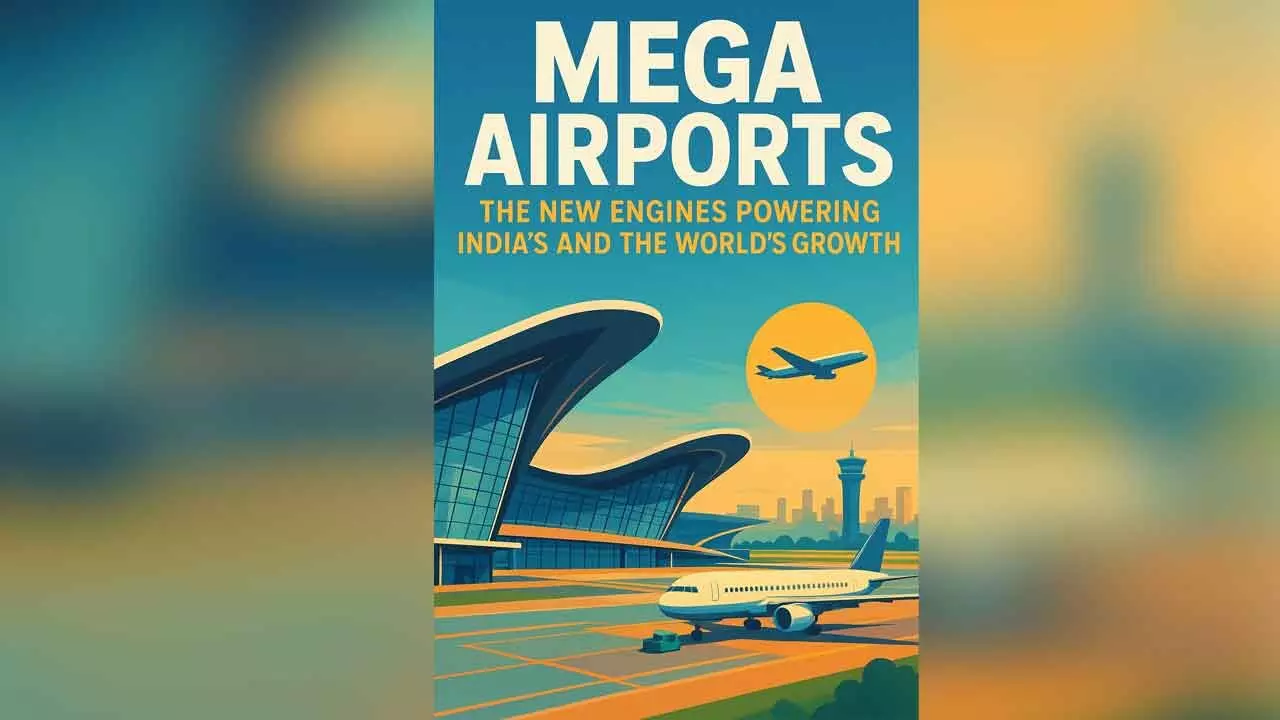India’s 2 mega airports take off as global aviation enters a new era
Noida and Navi Mumbai airports mark India’s leap into next-generation aviation, where sustainability, smart design, and economic ambition converge
India’s 2 mega airports take off as global aviation enters a new era

India is all set to see two new mega airports opening up this month- Noida International Airport (NIA) in Delhi NCR and Navi Mumbai International Airport in Mumbai Metropolitan Region (MMR).
The airports are being developed to meet the growing demand for air travel and to ease congestion at the two existing airports in the country’s largest cities. Aviation regulator DGCA has already granted an aerodrome license to NMIA to commence operations.
Airlines have also started tying up with the airports. Last month, Air India Group joined IndiGo and Akasa Air to launch operations from NMIA. For the Noida airport, IndiGo signed an MoU in November 2023 to serve as the launch carrier. Akasa Air has also committed to building a strong network from here.
NMIA is a 74:26 joint venture between Adani Airport Holdings Ltd (AAHL) and City and Industrial Development Corporation of Maharashtra (CIDCO). The airport is being built in five phases, with the launch phase expected to accommodate 20 million passengers per annum (MPPA) and handle 0.5 million metric tons (MMT) of cargo. Upon full completion, NMIA will have the capacity to serve 90 MPPA and handle 3.2 MMT of cargo annually.
Flight operations at Noida International Airport will begin within 45 days of inauguration. The first phase of the airport, with one runway and one terminal, will have the capacity to handle traffic of 12 million passengers annually. After the completion of the fourth phase, NIA will have the capacity to manage 70 million passengers per year. Built with an investment of over $2 billion, NIA is expected to support high demand for air traffic in the NCR region.
Yamuna International Airport Private Limited (YIAPL), a 100 per cent subsidiary of Zurich Airport International AG, is responsible for the development, construction and operation of the greenfield project. The project has faced repeated delays as it was originally targeted for a September 2024 opening and later revised to mid-2025.
The future of mega airports involves becoming interconnected, technologically advanced, and sustainable economic hubs that are destinations in themselves, not just transit points. Key trends include the widespread adoption of AI for personalized and contactless passenger experiences, the integration of new transportation modes like urban air mobility, and a strong emphasis on green building and energy-efficient technologies to achieve net-zero goals.
In 2025, mega airports are emerging as the economic linchpins of a more connected world. With more than a dozen airport megaprojects under construction globally—from San Francisco and Perth to Riyadh and New Delhi—nations are racing to expand capacity and compete for global investment. These hubs are more than gateways for people, though. They’re engines for supporting growth, generating high-skilled jobs, attracting FDI, driving trade, and anchoring regional development.
And they’re being built for the future, backed by carbon-neutral terminals, ESG-driven design, and net-zero aviation targets. Large-scale, modern aviation infrastructure is no longer a nice-to-have, it’s a strategic necessity.
From Asia to the Middle East, and across Europe and North America, mega airports have the potential to reshape the economic geography of entire regions. In the Middle East, Dubai’s Al Maktoum International Airport is on track to become the world’s largest, with a planned capacity reaching 260 million passengers per year and 12 million tonnes of cargo annually. At an estimated cost of $35 billion, the project includes 400 aircraft gates, five parallel runways, and a planned airport city supporting one million residents and global logistics firms.
In China, Beijing Daxing Airport—nicknamed the ‘starfish’—has already catalyzed a logistics and innovation zone, generating billions in investment and new jobs in the surrounding region. Its development directly supports the country’s broader economic targets, including a 5 percent GDP growth rate in 2025, backed by rising urbanization and infrastructure spending.
Europe also continues to push for mega airport development. Expansion plans like Heathrow’s third runway and Frankfurt’s Terminal 3 project are part of a broader effort that could add hundreds of thousands of new flights per year, unlock increased trade, and generate economic benefits estimated in the £100 billion range for the UK alone.
Europe is investing over €70 billion in mega airport projects—demonstrating how aviation hubs are evolving into economic development platforms.
These mega airport developments don’t just boost capacity. They generate vast numbers of construction jobs, long-term roles in logistics and aviation services, and broader impacts on GDP. Many are built with sustainability at their core, incorporating electric ground fleets, smart grids, and carbon-neutral terminal design that align with ESG goals.
Together, these global examples show that mega airports are not simply transportation infrastructure but strategic economic infrastructure, shaping the future of regional development.

